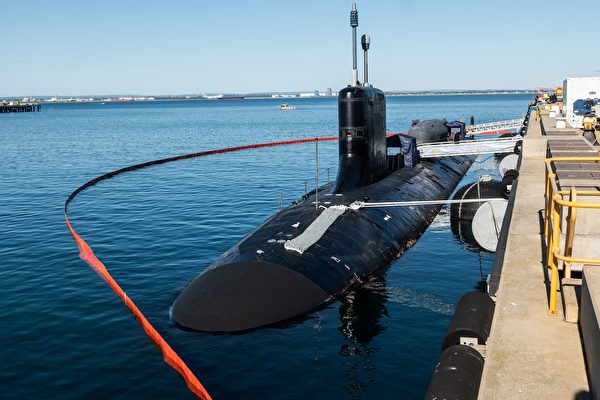In recent years, the relationship between China and the United States has been deteriorating with the Chinese Communist Party (CCP) increasing its military presence in areas like the Taiwan Strait and the South China Sea, traditionally dominated by US military fleets. This escalation has heightened the possibility of a confrontation between the two countries.
On Tuesday, May 28th, retired US Navy Admiral and columnist James Stavridis wrote an article on Bloomberg’s website archive.today, emphasizing the significance of the US possessing more and better-maintained attack-type nuclear-powered submarines in potential maritime warfare against China.
Stavridis, who served as an Anti-Submarine Warfare Officer on the Spruance-class destroyer, highlighted the superior capabilities of US submarines in hunting and neutralizing enemy submarines. He pointed out that destroyers are essentially vulnerable targets for advanced nuclear attack submarines without robust support from carrier-based anti-submarine aircraft or land-based maritime patrol aircraft like the P-3 Orion.
The Virginia-class attack submarines, considered top-notch “hunters” in the ocean, play a crucial role in US national security according to Stavridis. These submarines are equipped with the latest stealth, intelligence gathering, and weapon systems technologies, enabling them to seek and destroy enemy submarines and surface vessels, conduct land strikes with Tomahawk cruise missiles, deploy special operations forces, perform intelligence, surveillance, reconnaissance missions, and support combat group operations.
Since 2020, China’s defense spending as a percentage of GDP has been steadily increasing. The number of warships China constructs annually significantly exceeds that of the US, with approximately 350 frontline combat vessels in the Chinese fleet compared to 290 in the US Navy.
Discussing the severity of the war threat, Stavridis stated that while the likelihood of an overt maritime conflict occurring in the next three to five years is low due to Chinese President Xi Jinping’s caution about his military’s current capability to confront the US and its regional allies, a potential long-term concern lies in a maritime conflict with China, possibly starting from the South China Sea along the so-called “First Island Chain” from Japan to the Philippines, Indonesia, and the Malay Peninsula.
Stavridis emphasized the critical need for the US Navy to secure funding to build at least two to three nuclear attack submarines annually and to enhance naval infrastructure by adding three large dry docks, two small dry docks, and potentially expanding shipyard capabilities, such as reviving the facilities on Mare Island in northern San Francisco or constructing a new shipyard.
While war is unpredictable, Stavridis stressed that one thing is certain: to win a war or better deter China before it starts, the US requires a robust submarine force and shipyard facilities to ensure combat readiness. More and better-maintained submarines will undoubtedly be key in potential maritime conflicts with China.
James Stavridis, a former Supreme Commander of NATO, Honorary Dean of the Fletcher School of Law and Diplomacy at Tufts University, and Vice Chairman of the Carlyle Group’s Global Affairs, is a board member of Fortinet and Ankura Consulting Group.

